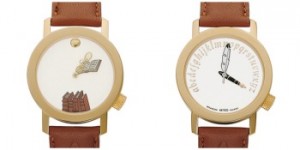St Mark’s clock, Venice
St Mark’s clock, Venice
St Mark’s clock, Venice
-
Hannah
-
Hannah

Are you a horologist, a lover of timepieces? It seems to me that the world is divided into those who find clocks, from the grandfather down to the miniature, charming and collectable, and those who are something like Captain Hook of JM Barrie’s Peter Pan, haunted by the ‘infernal’ ticking!
I’m in the former camp. I find clocks fascinating and powerful – their appearance, their mechanisms, their chimes and ticks, and their symbolism in marking the passing of time. I begin my novel The Echoes of Love thus:
The clock struck midnight just as Venetia went past the grand eighteenth-century mirror hanging over the mantelpiece in the hall.
Time is fundamental in the novel, and so it is fitting that a clock be the very first image, and the one that brings awareness of the very heart of the book, the echoes of love:
She looked up at the clock. Firelight fell warm on the gold dial. Time had stopped for her. She was amazed at how long she had been standing there reminiscing about her lost life, feeling the echoes of a lost love.
I can trace my appreciation of horology back to childhood, to those antique pieces in my home, but most of all to a family trip taken to Venice, Italy. In fact, it is my first, and most striking, memory of Venice: standing in the heart of the city, in St Mark’s Square gazing up at the Torre dell’ Orologio, the clock tower.
As I write in The Echoes of Love, the clock represents ‘the three pillars of La Serenissima’s power: scientific progress, civic enlightenment and Christian faith; a splendid specimen of Venetian art work and engineering. Its mystical, pagan influences [are] no less beautifully represented in the exquisite representation of the blue and gold zodiac on the clock face.’
But no doubt my childlike wonder at this clock would have been rudely shattered had I known then the legend behind its construction:
The engineers who built the mechanism of the gold and blue chef d’oeuvre had their eyes gouged out so as to prevent them from building a similar piece, and ensure that no other city could have such a magnificent clock as Venice.
It appears this is pure myth, however. History records that the clock was built at the very end of the 15th century by father and son Gian Paolo and Gian Carlo Rainieri. Following the inauguration of the clock, Raineri lived in the clock tower with his family under the pay of the Venetian government to maintain the clock – presumably he would not have been first choice for the post were his eyes missing! Raineri was the first in a line of temperatores (clock keepers), who tended the clock until 1998. What a fabulous job! One to add to my list of romantic occupations for prospective future romantic heroes.
If, like me, you’re something of a horologist then here are some museums you’ll find interesting:
- London: Royal Greenwich Observatory; Clockmakers’ Museum; Cuckooland Museum
- Switzerland: Musée international d’horlogerie
- Germany: Deutsches Uhrenmuseum.
- USA: National Watch and Clock Museum, Pennsylvania; American Clock and Watch Museum, Connecticut; Willard House and Clock Museum, Massachusetts
And for quirky, original wristwatches that show off your particular passion in life, take a look at the French Akteo range. I love these watches for writers and book lovers; spectacles for hands!
